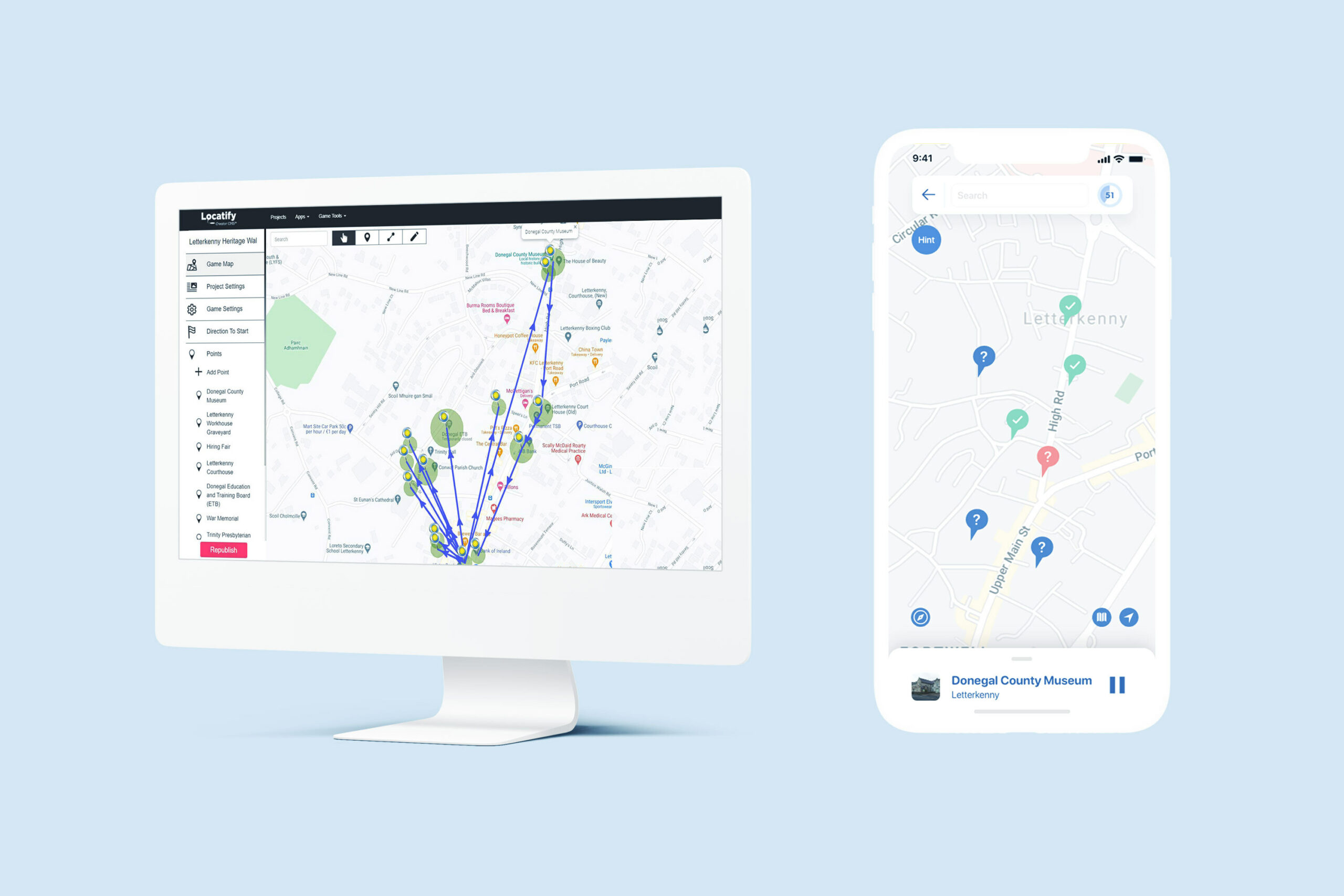CINE: Connected Culture & Natural Heritage in a Northern Environment
CINE is a collaborative digital heritage project between partners from Norway, Iceland, Ireland, Northern Ireland and Scotland. The project is funded by the Northern and Arctic Periphery Programme (ERDF) and aims to transform people’s experiences of outdoor heritage sites through technology.
Building on the idea of “museums without walls”, new digital interfaces such as augmented reality, virtual world technology, and easy to use apps will bring the past alive – allowing us to visualise the effects of the changing environment on heritage sites, and to help us imagine different future scenarios.
CINE is responsible for development of content management toolkits – enabling curators, archivists, historians, individuals and communities to make innovative heritage projects to create unique on-site and off-site customer experiences in specific locations.
This blog post will examine the various aspects of CINE that Locatify was involved with between 2017 and 2020.

Locatify CINE Contribution
Locatify has been involved with CINE since the beginning and has been involved as a technical solution partner for trialing various technologies for heritage organisations. Contributions include location-based content for heritage sites, trialing UWB at Skriðuklaustur for precise positioning of a 3D model in mixed reality, an Augmented Reality treasure hunt game, and gamifying the learning experience for heritage sites with location-based app content.
Can we have fun with our Cultural Heritage?
Learn more about gamification and games-based approach to cultural heritage with this handbook.
CINE Talks
Storytelling and gamification are powerful tools, and, twinned with digital technologies, offer exciting possibilities for heritage engagement. See the webinar below hosted by our partners at Skriðuklaustur where we reflect on all we have learnt through the CINE project. Watch all of the CINE Talks here.
Letterkenny Heritage Walk built with Locatify Creator CMS
Letterkenny Heritage Walk is a location based walking game where you have to discover historical sites and complete interactive challenges while competing against other players or teams. The game is played using Locatify’s free TurfHunt app developed as part of the CINE : See The Past | Imagine The Future project.
The heritage walk was created by Donegal county museum, Ireland using Locatify’s content management system for making tours and games. No coding or advanced IT skills required!
The gamified tour encourages groups and families to walk the historic centre of Letterkenny with their smartphones. As players visit the town’s locations they complete mini, interactive challenges for points and treasures. The player or team with the most points at the end is the winner. Signup and create a game free!

Skriðuklaustur Monastery Site, Iceland
The heritage site Skriðuklaustur contains the ruins of a 16th century Augustinian monastery which provided the testing ground for a variety of technologies during the CINE project. The monastery was founded around 1493 but came to an end during the Reformation in 1550. In the following centuries, the history of the monastery was almost forgotten, but was revealed in an archaeological research project in the years 2000-2012.
Augmented Reality (AR) Treasure Hunt Game
The mobile app is part of an exhibition of the medieval monastery at Skriðu í Fljótsdalur . The game is designed to encourage education through an innovative use of augmented reality technology. Players learn about the history of the monastery through treasure hunt style and quiz games, as players search for clues and treasures using the phones camera and sensors. The game involves customisation of your character and a scoreboard of game progress as users navigate their way through the site and exhibition.
Skriðuklaustur 3D models – 16th century monastery buildings
3D model of the theoretical buildings of the 16th century monastery at Skriduklaustur in East-Iceland. In total, the buildings here covered around 700 square meters (7500 sq.ft.) – in part built on two floors. The church was the largest and connected the main cloister with a hallway. In addition to a church and cemetery bounded by a stone wall, there were a variety of cloister rooms which differed in size and type: a sleeping section, a kitchen section with a separate dining area, and a section with work and storage facilities.
Ever since the excavation ended at Skriðuklaustur in 2012, all the findings from the dig have been researched, catalogued and shared through different media. In 2012 the first 3D model of the buildings was made, which became the foundation of a detailed 3D model made by the University of St. Andrews through the CINE project. That model has since been updated using Unreal Engine and now it is possible to walk around the cloister buildings using an Oculus VR headset. A preview of virtual reality is shown in the video.
Ultra-wideband (UWB) for accurate positioning of 3D models outdoors
In total, the buildings here covered around 700 square meters (7500 sq.ft.) – in part built on two floors. The church was the largest and connected the main cloister with a hallway. In addition to a church and cemetery bounded by a stone wall, there were a variety of cloister rooms which differed in size and type: a sleeping section, a kitchen section with a separate dining area, and a section with work and storage facilities.
Ever since the excavation ended at Skriðuklaustur in 2012, all the findings from the dig have been researched, catalogued and shared through different media. In 2012 the first 3D model of the buildings was made, which became the foundation of a detailed 3D model made by the University of St. Andrews through the CINE project. That model has since been updated using Unreal Engine and now it is possible to walk around the cloister buildings using an Oculus VR headset. A preview of virtual reality is shown in the video.
Conclusion
Locatify is proud to have taken part in the CINE project and would like to extend a congratulatory hand to all of our partners, and an additional thanks to the Northern and Arctic Periphery Programme (ERDF). You can learn more about CINE, resources, outputs and results here.



